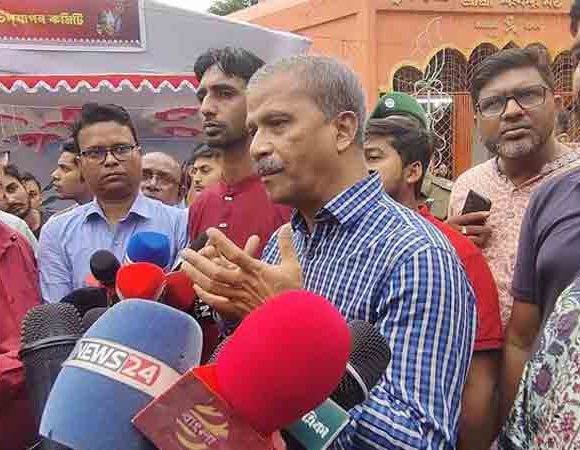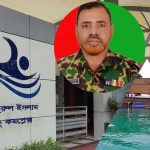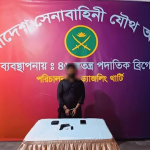PCJSS propaganda on human rights situation in CHT

PARBATTA DARPAN REPORT
The Santu Larma-led Parbatya Chattagram Jana Samhati Samiti (PCJSS) on 1 July 2025 released a semi-annual report titled ‘January-June 2025: Human Rights Situation in the Chittagong Hill Tracts,’ alleging widespread violations by both state and non-state actors. The report claimed that between January and June, 103 incidents of human rights violations occurred, allegedly committed by security forces, armed groups backed by the military, communal and fundamentalist factions, Bengali Muslim settlers, and land grabbers. According to the report, 315 Jumma individuals were affected, 49 were arrested, and over 300 acres of land were seized by outside companies, influential persons, and settlers.
However, an independent assessment by the CHT Research Foundation (CHTRF) found no evidence to substantiate these allegations. Reviewing 113 incidents published across various media during the same period, CHTRF concluded that the PCJSS claims were largely uncorroborated. Most of the reported events were not covered by credible news sources and appeared to originate from social media propaganda, particularly from platforms operated by regional hill-based groups. For example, the claim that 300 acres of land had been seized was found to have no supporting evidence.
The PCJSS report also failed to acknowledge the activities of armed ethnic groups, including PCJSS itself, which continue to contribute to insecurity in the region. Rather than presenting a balanced picture, the report selectively focused on incidents where the organization could depict itself as a victim, ignoring broader contextual realities.
Notably absent from the report was any mention of the disruption of mobile communication in the region, a basic right in the digital era, caused by extortion, sabotage of telecommunications towers, and the abduction of mobile company technicians by armed groups. On 19 April 2025, two such technicians were abducted in Manikchhari, Khagrachari, and remain missing. Similarly, on 26 June, video footage circulated on social media showed 7 to 8 armed insurgents staging a demonstration in attempts to extort money at the Rangamati University of Science and Technology. Neither incident was acknowledged in the report.
Currently, at least six armed groups, including PCJSS, are active in the CHT, engaging in extortion and other criminal activities. To contain the violence, security forces conduct regular patrols throughout the region. These patrols, sometimes passing through tribal villages, were labelled in the PCJSS report as violations of human rights. However, the report failed to mention that such operations have helped restore stability in parts of the region. In Bandarban, for example, 328 members of 121 Bawm families across 28 villages have returned to their homes, aided by security forces providing medical assistance and rehabilitation support.
The PCJSS also cited arrests as examples of human rights violations, but did not acknowledge the role of armed groups in perpetuating violence and insecurity. The arrest of armed actors is essential for protecting civilians, and such efforts are not limited to Bangladesh. On 12 February 2025, international media reported the arrest of three PCJSS members with weapons in Lunglei, Mizoram. On 3 June, 13 more members were detained in Tripura, India, allegedly undergoing arms training under a separatist group. None of these incidents were included in the PCJSS report.
Despite these omissions, such reports are routinely distributed by PCJSS to diplomats, international organizations, media outlets, and human rights bodies, influencing external perceptions of the situation in Bangladesh.
By contrast, the CHT Research Foundation documented and analyzed incidents related to law and order and human rights across Rangamati, Bandarban, and Khagrachari from 1 January to 30 June 2025. Its analysis indicated that during this period, 40 individuals were killed in various incidents. Among these, 11 were victims of intra-indigenous conflict, 4 resulted from settler-settler violence, and 1 settler was killed by an indigenous group. There were no reported incidents of indigenous persons killed by settlers. In addition, 1 person died in a fire, 12 in road accidents, 6 from drowning, and 5 from other causes.
In the same timeframe, 81 people were injured. Six of them were indigenous individuals injured by members of their own community, six were settlers injured by fellow settlers, and thirteen were settlers injured by indigenous assailants. No indigenous individuals were reported injured by settlers. Other causes of injury included intra-party conflict, traffic accidents, and landmine-related incidents.
Fifty-six abductions were reported across the three districts. Of these, seven victims were abducted by members of their own indigenous communities, and forty-nine were settlers abducted by indigenous groups. There were no reports of indigenous persons being abducted by settlers.
Eleven incidents of rape occurred during the reporting period. Two cases involved indigenous-on-indigenous assaults, seven involved settler-on-settler crimes, and one case involved a settler accused of raping an indigenous woman; in that instance, the suspect was arrested and sent to jail. In another case, an indigenous woman was raped and killed in a remote area, but law enforcement was unable to identify the perpetrator due to the remote location of the incident.
Law enforcement agencies also recovered a total of 30 firearms and 239 rounds of ammunition from across the region. Among these, five firearms and 18 rounds were recovered from members of the Santu Larma-led PCJSS (JSS) faction. Fourteen firearms and 217 rounds were recovered from the United People’s Democratic Front (UPDF) led by Prasit Bikash Khisha. An additional 11 firearms and 4 rounds of ammunition were recovered in abandoned condition.
A comparative analysis of the two reports indicates that the PCJSS account is largely exaggerated and, in many cases, lacks evidentiary support.
















